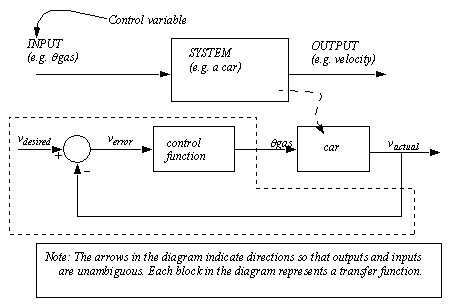Indication of how far the accelerator has been pressed.
Car cruise control system block diagram.
This is the block diagram of the hardware for such a system.
If on denotes that the car engine is turned on.
If on denotes that the cruise control system should maintain the car speed.
M vehicle mass 1000 kg b damping coefficient 50 n s m r reference speed 10 m s.
The purpose of the cruise control system is to maintain a constant vehicle speed despite external disturbances such as changes in wind or road grade this is accomplished by measuring the vehicle speed comparing it to the desired or reference speed and automatically.
System modeling page for the derivation.
To understand how the cruise control system works we will derive the equations for the closed loop systems described by equations d4 2eand d4 3esince the effect of the slope on the velocity is of primary interest we will derive an equation that tells how the velocity error.
What remains is to find the closed loop system function h s v s r s.
Automatic cruise control is an excellent example of a feedback control system found in many modern vehicles.
Speed set by the driver of the vehicle without the need to press the accelerator pedal this system is particularly useful while driving at a constant speed as it significantly reduces driver fatigue.
1 the parameters used in this example are as follows.
τ d4 3e a block diagram of the system is shown in figure 4 2.
The cruise control is a system that is capable of automatically maintaining the desired speed i e.
System model and parameters.
A pulse is sent for every revolution of the wheel.
Design diagram and working explained.
There are several inputs.
The block diagram input is r s which is the lt of r t the command input to the cruise control.
The cruise control system is only active if the engine is on.

